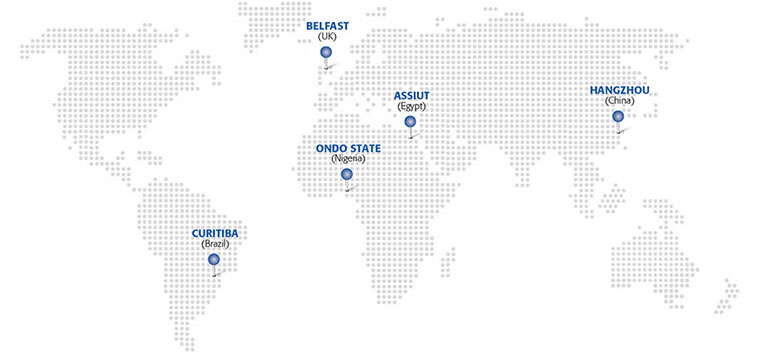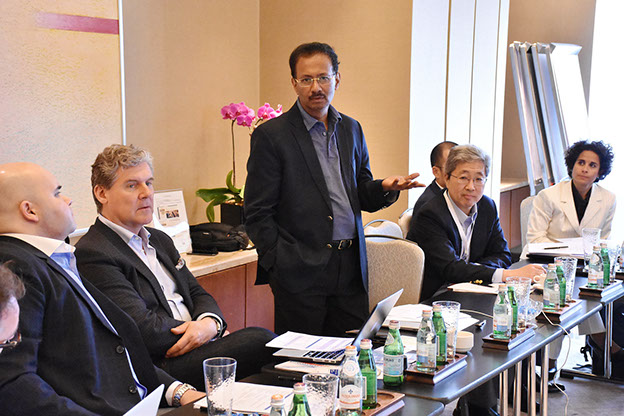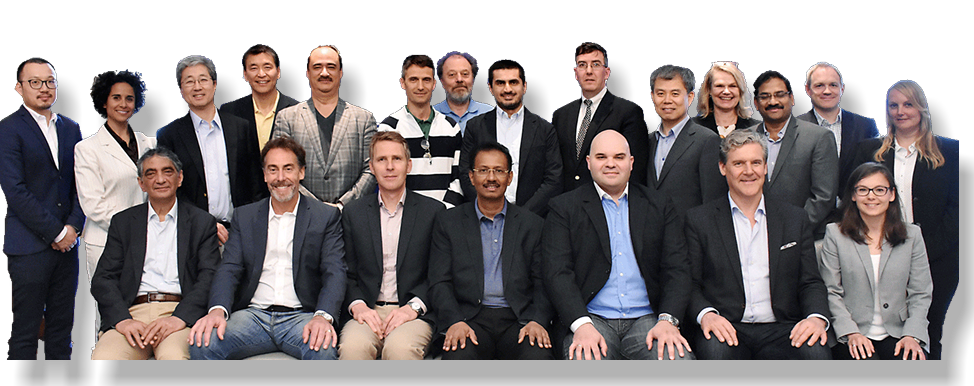AOSpine Research Commission marches ahead with globalization and metrics assessment
The AOSpine Research Commission (AOSRC) has successfully developed AOSpine into a premier knowledge provider in the field of spine surgery. “The two new initiatives—globalization and devising rigorous metrics for evaluating performance in all spheres of activity—have improved the research commission's impact and output considerably,” says outgoing AOSRC Chairperson Professor S. Rajasekaran. Working closely with the AOSpine Education and Community Development Commissions, the next phase is to disseminate and implement the findings to the spine community.
The five AOSpine Knowledge Forums (KF) are the main engines for clinical research—which rose to the forefront of AOSpine research in S. Rajasekaran's term—and are now integrated in the AOSRC through the KF Chairpersons. The KFs have evolved from a group of hand-“The KFs have evolved from a group of hand-picked key opinion leaders into truly international study platforms.”picked key opinion leaders into truly international study platforms. From 37 clinical studies, the KFs have published 125 peer-reviewed articles and presented 240 abstracts in international conferences. In his new role as Chairperson of the AOSpine International Board, S. Rajasekaran will continue the globalization, to build our world-wide spine community, and to motivate universal research participation.
AOSpine network fueling globalization
In recent years the AOSRC has witnessed a major change in how research projects have been implemented. The globalization initiative aims to respond to this shift and to produce more impactful research that is relevant to spine specialists globally.
Two years ago, the AOSpine International Board pledged one million Swiss Francs for new projects to promote globalization. A precondition was to involve more than one AOSpine Region and at least one KF. From more than 30 proposals, funds were awarded to three clinical studies, which are now underway:
- AOASD—Development of a novel adult spinal deformity classification;
- PEPSO—Understanding patient expectations and perceptions in spinal oncology; and
- SDIM—Spinal deformity intraoperating monitoring study.
Efforts are also underway to improve KF reach via global collaboration with prominent spine centers worldwide. The KF Tumor research and outcomes networks for metastatic and “The globalization initiative aims to produce more impactful research that is relevant to spine specialists globally.”primary tumors (MTRON and PTRON) now involve 30 clinics and have attracted a group of 40 associates from all AOSpine Regions; and the KF Trauma Burst Fractures TLA3/4 study has 15 participating clinics from Asia-Pacific, North America, Europe, and the Middle East.
With an extra impulse from the AOSRC's mentorship program where surgeons from across the world were introduced to hands-on research, globalization is becoming an organic process. Building on an initiative first developed by Dan Riew, the program was expanded by “Globalization is becoming an organic process.”bringing entire surgical units into guided research projects. Five units, one from each region, were selected through an open call and participated in an international multicenter pilot study on “Inter-rater variability for CT based assessment of posterior ligament complex in thoracolumbar fractures (T11-12)”. The results of the study will be published soon.

The surgical units of five sites representing all five AOSpine Regions were selected to the Mentorship project in an open call. They successfully performed an international multicenter pilot study on “Inter-rater variability for CT based assessment of posterior ligament complex in thoracolumbar fractures (T11-12).”
Success that can be measured
To increase the quality and impact of AOSpine research and to add transparency and accountability, five years ago the AOSRC introduced strict self-evaluation metrics. “No such system can ever be completely foolproof, so we are constantly reviewing the indicators and “We are constantly reviewing the indicators and finding new ways to measure performance and success.”finding new ways to measure performance and success. AOSpine hopes to lead and set an example through innovative initiatives like this,” S. Rajasekaran adds. In addition to measuring achievements by number of publications or Impact Factor, the AOSRC has included evaluation of educational value, social impact, and for value for money.

Chairperson S. Rajasekaran leading the discussion at the AOSpine Research Commission Meeting in Singapore on May 1, 2018.
The final take-away from S. Rajasekaran's AOSRC meetings was defining priorities and hot topics for future research. “The current mantra is precision medicine and personalized spine care. Evolving low cost-high quality health care is also high on the agenda for the future,” S. “The current mantra is precision medicine and personalized spine care.”Rajasekaran explains. This will be achieved by continuing bench-to-bedside research, followed by dissemination into the community. “I am pleased to be able to pass on the legacy I inherited from Dan Riew to Dino Samartzis. Dino is an outstanding research personality known for his hard work, vision and integrity. There is no doubt that AOSRC will make further progress under his direction.”

Newsletter 17 | July 2018
Newsletter 17
July 2018
feature storIES